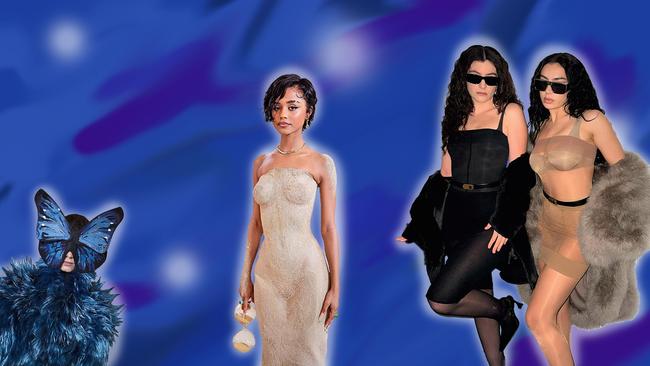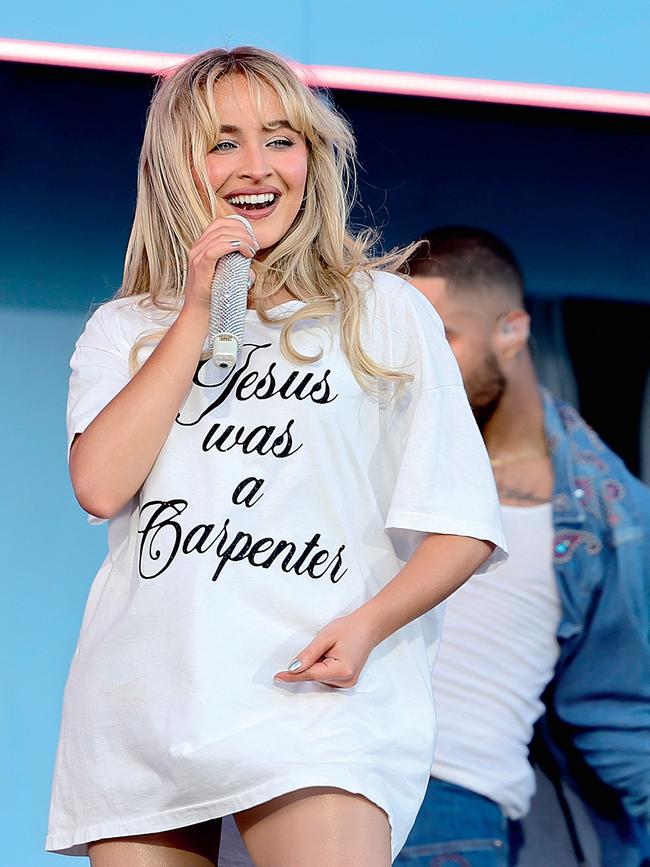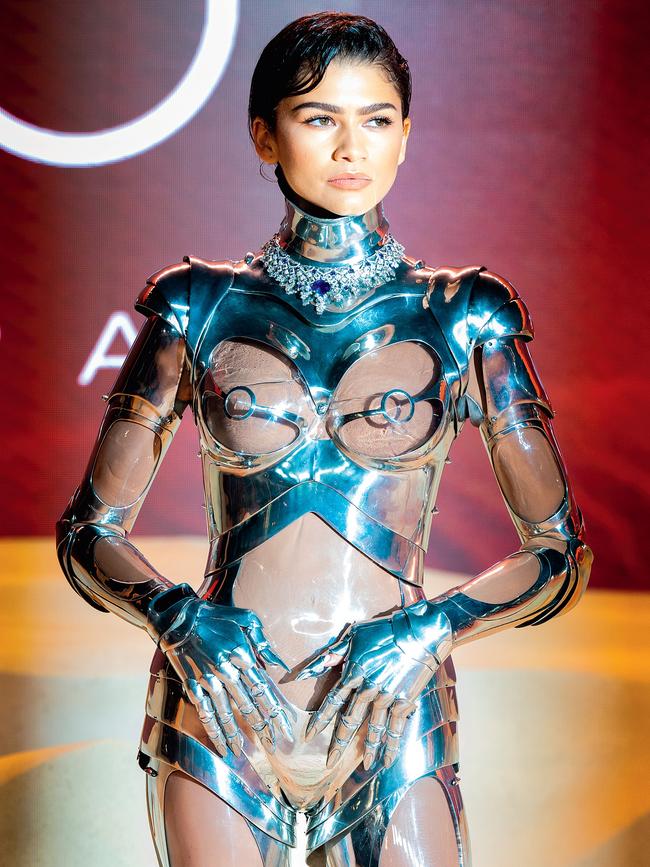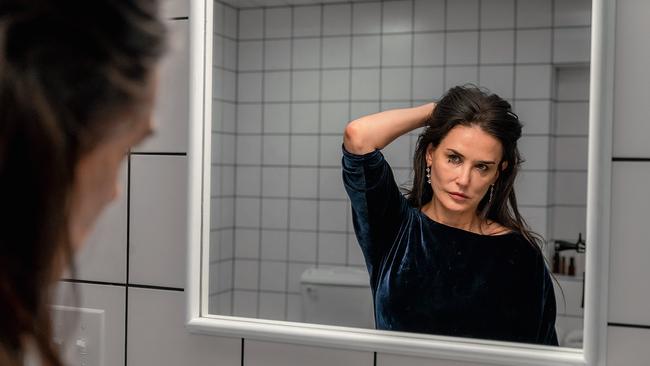A year in review: looking back at the most iconic cultural moments of 2024
The year gone by is defined by epic moments that left permanent stamps on fashion and culture, with the two worlds intersecting more than ever, and changing everything for good.

Fashion has always been about change, but this year the industry pushed its own limits when it came to upheavals. One big move in June seemed to set off a chain reaction, when Chanel’s Virginie Viard, only the third designer to have helmed Chanel in more than a century, announced the end of her five-year tenure as creative director. The vacancy in one of fashion’s biggest jobs caused the rumour mill to churn, and no one was off the table. Marc Jacobs? Simon Jacquemus? Phoebe Philo? (At the time of writing, Chanel is yet to name Viard’s successor, so its design team is presiding over collections, though many suggest an announcement is imminent.) But if fashion’s post-covid years have been about finding stability, 2024 ushered in renewal, as designers arrived and departed labels, and houses floated in limbo awaiting new leadership.


Incumbents included Sarah Burton, formerly of Alexander McQueen and now at Givenchy, and tailoring maestro Haider Ackermann, who’s found an apt home at Tom Ford. Both will debut collections early next year. 2024 also marked debuts of fêted designers at historic brands, like Alessandro Michele at Valentino, and Seán McGirr at McQueen. Departures included Kim Jones from Fendi and Hedi Slimane from Celine, who some speculated might replace Viard at Chanel after Celine’s tweed-filled spring/summer ’25 collection felt like more than an homage to Coco. An abnormally long silence from John Galliano, who eschewed ready-to-wear this year after showing his much talked-about Maison Margiela spring/summer ’24 haute couture collection in January, has fuelled questions about whether he’s headed somewhere bigger. It’s never been more difficult to predict what fashion will look like a year from now – but expect nothing to be the same as it was. And that’s exciting. JW
Queens of pop

We can file the word ‘brat’ under things that will never be the same after this year. Through the album of the same name (and its remix album released in October, immediately dominating the charts, again), pop renegade Charli XCX created a cultural touchstone that pulled Lorde, Troye Sivan and even US presidential candidate Kamala Harris into its lime orbit.
Column inches continue to be written about Brat, a shining moment in a year ruled by female musicians. But while Beyoncé and Taylor Swift released albums this year, it wasn’t just pop’s megastars who dominated the conversation. 2024 saw a guard of breakthrough ‘pop girls’, including Charli, making their voices heard through honesty and unique perspectives that ricocheted far beyond a catchy hook. Take Sabrina Carpenter, whose silky vocals and quirky wordplay (“that’s that me, espresso”) cemented the 25-year-old in the zeitgeist, or South Africa’s Tyla, whose stardom became a platform for the amapiano genre of her home country. Addison Rae’s ‘Diet Pepsi’ saw the TikTok star seamlessly transition to a pop idol with the fashion trappings to boot; see her Britney-reminiscent feathered bra at the VMAs. Meanwhile, fast-rising singer Chappell Roan’s honest conversations about mental health sparked dialogue about the less glamorous side of stardom – also touched on by Charli on Brat, and until now an aberration in an industry known for varnish over vulnerability.


Though different individually, 2024’s pop girls were unified by uncompromisingly honest approaches, balancing salient life lessons with music that lifts us up. In finding something to dance to this year, it felt like we found ourselves, too. JW
Behind the seams

If at some point – between the throbbing soundtrack and the ping-pong flashbacks – you lost track of who was winning the power games in Challengers, just look for the Loewe T-shirt. Challengers stars Zendaya, Josh O’Connor and Mike Faist as tennis players tangled up in a singles match for three, who trade a faded grey top emblazoned with the slogan ‘I Told Ya’, back and forth like a volley. Who has it, and at what point in the film, is a marker of who holds the upper hand. By the time the film hit cinemas in April and Loewe was retailing the shirt (perpetually sold out), the answer was Loewe’s creative director, Jonathan Anderson, who also happens to be costume designer on Challengers. The designer’s move into film was cemented just a few months later, when he collaborated with Challengers director Luca Guadagnino on a second project, the Daniel Craig-led Queer.
Anthony Vaccarello of Saint Laurent is going one further, though, with the launch of Saint Laurent Productions, highlighting the growing overlap between fashion and film. Saint Laurent is the first fashion house to sidestep into film production and Vaccarello serves as costume artistic director on every project, a role the creative director has said goes beyond product placement. (“There’s no Saint Laurent T-shirt in a film,” he told Vogue US.) Rather, Saint Laurent Productions is closely involved in financing a filmmaker’s unique vision. Vaccarello’s collaborators include the Spanish auteur Pedro Almodóvar, horror maestro David Cronenberg and Jacques Audiard, whose musical Emilia Pérez is an early Oscar favourite. “In doing those films,” Vaccarello said, “the name of Saint Laurent stays forever.” HRY
Sport’s winning streak
On paper, sport and fashion have a lot in common: an emphasis on peak performance and an ability to form culturally significant and memorable moments. But few would have predicted how much the two would hit it off in 2024. That’s thanks in major part to the 2024 Olympics in Paris, which hosted as many memorable fashion moments as it did iconic sporting ones. See Celine Dion’s stage return at the Opening Ceremony in dazzling Dior haute couture, or Mongolia’s stately uniforms for the same event that went viral on social media. LVMH was the premium partner of the Olympics, speaking to the unprecedented overlap between sport and fashion, also seen in Australia’s own Emma McKeon becoming a Dior and Omega ambassador. Tennis champion Naomi Osaka wore a Nike x Ambush ribboned neon outfit at the US Open, and proved the court is as important a fashion destination as ever. For those who think fashion brands’ sponsoring of sport – a space previously dominated by watch and jewellery brands – was an Olympic-year anomaly, think again. Business of Fashion reported the industry’s investment in sportspeople and events would jump by more than US$40 billion between 2021 and 2030.


The craze even arrived at the runways: see Dior’s spring/summer ’25 show, centred around archery with artist and competitive archer Sagg Napoli shooting targets on stage, or the unstoppable success of Thom Browne, whose luxury takes on sportswear have helped the once-niche tailor’s brand reach
a valuation of US$500 million. 2024 proved that when fashion and sport join forces, everyone wins. JW
Bohemian rhapsody
Quiet luxury – or understated, moneyed style prioritising craftsmanship over showiness – was an inescapable trend last year, thanks to Bottega Veneta, The Row and a courtroom-bound Gwyneth Paltrow. But an abundance of cashmeres and taupe trenches caused many to hope a more expressive side of fashion would materialise. In its place in 2024, boho style made its megawatt comeback, reimagined for a new era.

For the uninitiated, or too young to remember, the shortening of the word bohemian defined a movement in the 2000s. See Getty Images photos of bellwethers Sienna Miller and Kate Moss, who turned tank tops, distressed denim, thick leather belts, wedges and cowboy boots into a cool-girl uniform that balanced beauty with loucheness, replete with craft-like elements for personality. Miller sat front row at this February’s Chloé autumn/winter ’24/’25 show, a collection expertly positioned by new creative director Chemena Kamali as a play on the label’s 1970s bohemian history with a nostalgic skew for one-time boho girls who’ve grown up. The difference being they can now more likely afford Chloé, compared to previously cutting it out of magazines.
Chloé paved the path for a phenomenon that encompassed Gen Z – there are nearly a million videos with the hashtag ‘boho’ on TikTok – while everyone from Daisy Edgar-Jones to Jerry Hall was seen trading ‘quiet luxury’ for clothes with personality, including ruffled blouses and wedges. In a world that can feel constrictive, the arrival of boho felt like a message from the universe to go with the flow. JW
Australia’s new faces
In February 2023, Sydney-raised model Angelina Kendall closed Khaite’s autumn/winter ’23/’24 show, followed by countless milestones that cemented the 19-year-old as one of the most important faces in fashion. This year, she served as Chanel’s all-important haute couture bride closing the autumn/winter ’24/’25 show and made the Business of Fashion’s coveted BoF 500 list (not to mention covering Vogue Australia).
Kendall’s breakout can be seen as a figurative iceberg tip in a new wave of antipodean modelling stars in 2024, as Australian models became unmissable on runways around the world. Take Sydney-raised Stella Hanan, whose debut entailed swishing down Alaïa’s spring/summer ’25 runway at the Guggenheim Museum in a cerulean hooded two-piece set; it was the first of her 19 outings the same season, including at Prada and Schiaparelli. Exclusive contracts – a sought-after achievement for new models, secured by Adut Akech Bior in 2016 – were achieved by Niamh Battersby, Izzy Cowdell and Achok Akoi, who debuted respectively for Prada, Louis Vuitton and Gucci at spring/summer ’25. They join other fast-rising antipodean runway stars, like Ella McCutcheon, Venus He and Mahalia Henderson, all successful due to their innately Australian work ethic and dependability, which is just as important as a killer walk. And while Miu Miu’s spring/summer ’25 opening model Sunday Rose Kidman Urban (yes, daughter of Nicole and Keith) was raised in Nashville, we’re claiming her as our own. JW
Main character energy

In March, Margot Robbie and her stylist Andrew Mukamal released their coffee table book Barbie: The World Tour (Rizzoli), in celebration of how the pair took the concept of method dressing mainstream. “The method dressing was Andrew’s genius; I definitely can’t take credit,” Robbie told Vogue UK at the time, pointing to how her stylist translated some of Barbie’s most iconic outfits into red-carpet-ready designer looks. That same month, ‘image architect’ Law Roach used his client Zendaya’s red carpet appearances for a major method dressing flex. At the world premiere of her film Dune: Part Two in London, Zendaya stepped out in a vintage Thierry Mugler robot suit from the archives that looked as if it had been kept on ice for her alone. According to Launchmetrics, Thierry Mugler received $225 million in media impact value as the images of Zendaya were beamed across the world.
Roach and Zendaya continued to understand the assignment while promoting her next film Challengers: Loewe tennis ball heels, a lawn-green Mugler skirt suit and a racquet-emblazoned Thom Browne dress. Roach calls it theme dressing, pointing to the power of red-carpet styling to create a character, long before that character is even introduced on the big screen. “I just hope the studios start to value the stylists who can do it well in
a bigger way,” he told a fashion magazine. Roach’s remarks are a sign that method dressing isn’t going anywhere, as the matching green and pink outfits worn by Cynthia Erivo and Ariana Grande on the Wicked promo rounds from May this year prove. HRY

Fashion’s radical joy
Whatever happened to fun? Marc Jacobs asked as much at his autumn/winter ’24/’25 show in July, titled ‘Joy, period’ – a U-turn from his austere show the year prior, fixated on fast-advancing AI and embodying fashion’s ability to reflect the times. “I believe in living with authenticity – free from validation and permission of absurd conservatism and societal norms,” the show notes read. The collection saw models in blown-up doll dresses – far from realistic, but a fantasy worth getting lost in.

In a year defined by an ominous news cycle – from wars to the cost-of-living crisis and climate change – fashion designers took on the role of joy-makers. Joy was palpable during the haute couture autumn/winter ’24/’25 season, where Balenciaga’s show was soundtracked by a guided meditation, while the runway teemed with designs involving hooded jumpers and butterfly face masks – a manifestation of designer Demna’s own ‘happy place’. Schiaparelli’s Daniel Roseberry took audiences to a dark room, where he showed billowing tulle dresses and feather-embroidered capes drenched in light, to represent phoenixes rising from the ashes – indicating new beginnings for us all.
At spring/summer ’25, Bottega Veneta considered the pure happiness of childhood. Blown-up suits recalled the kinds of clothes we saw ‘grown-ups’ wear. “As a kid … the door is open to the possibility of strange realities and wonder, impossible scenarios that banish disillusion,” designer Matthieu Blazy said of childhood, a uniting experience for everyone. By capturing childlike wonder, he immortalised the kind of primal excitement that fashion is all about. Against a global backdrop of uncertainty, 2024 saw fashion on a quest to find its happy place again. JW
The Demi-ssance

In 1995, a producer called Demi Moore a “popcorn actress”, meaning she wasn’t deemed the kind of performer worthy of critical acclaim. Almost three decades later, Moore has been garlanded for her role as Elisabeth Sparkle in The Substance. After a rapturous debut at the Cannes Film Festival, the film was released in September and follows Moore’s character, an Oscar-winner turned television exercise guru, fired the day she turns 50. When she is offered the chance to claw back the power – and collagen – of her youth, Elisabeth leaps at it, and so begins a gutsy, gory, gung-ho exploration of how, when it comes to ageism, sometimes the call is coming from inside the house.
Ferocious, fearless, brave: you name it, Moore’s performance has been called it. It is all those things and more: defiant, deranged, diabolical. And also devastating. Moore’s best scene is far removed from the chaos of the headline-grabbing body horror of the final act, when Elisabeth goes on a rare date. Standing in front of her bathroom mirror under the glare of downlights, she applies and reapplies her make-up, each slick of red lipstick leaving a stain like a wound. There are few actors who could imbue the confidence-withering power of that scene with the texture of realism, with the knowledge that so many women have been there, wielding that lipstick like a knife. But Moore can. And Oscar glory awaits. HRY



To join the conversation, please log in. Don't have an account? Register
Join the conversation, you are commenting as Logout